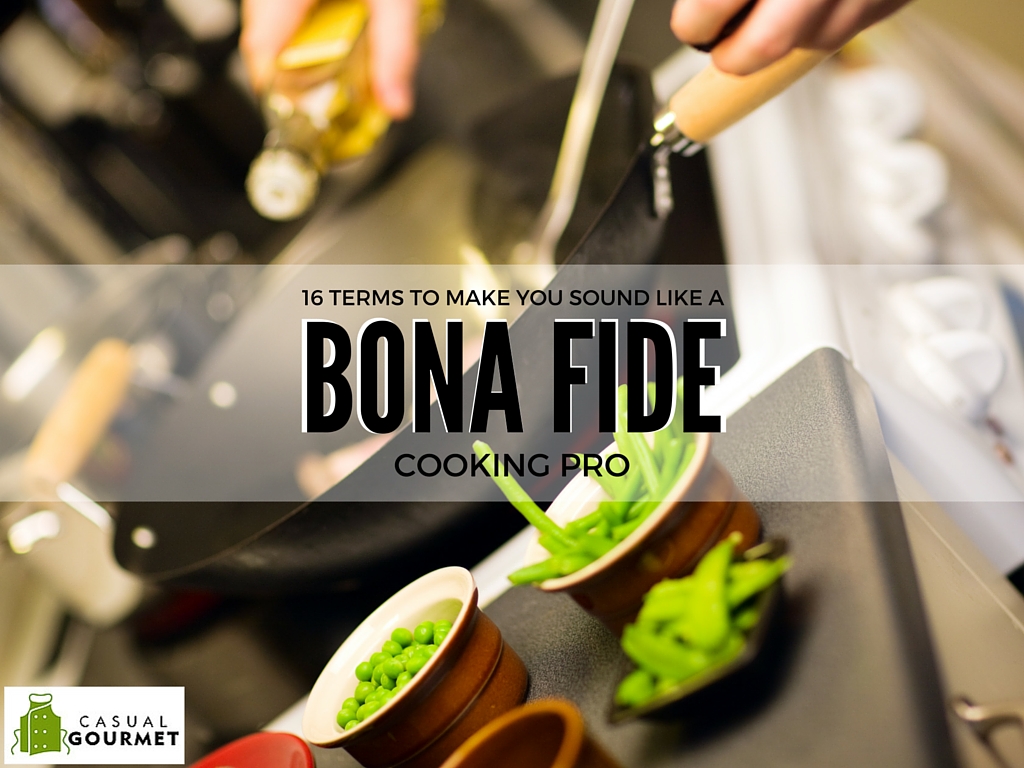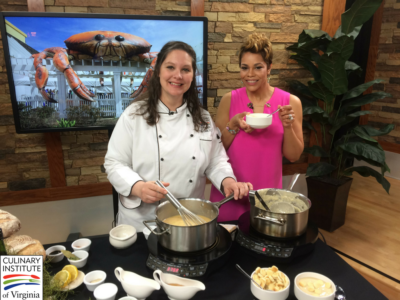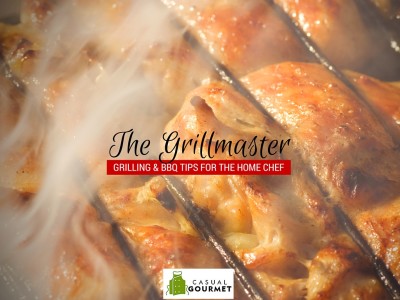16 Cooking Terms to Make You Sound Like a Bona Fide Cooking Pro
A good chef can take an ordinary chunk of cheese and make something grate. To learn to cook at home, you do not knead a lot of dough, nor do you have to get berried under a lot of cookbooks, but you mustard learn a few important cooking terms. Lettuce get started.
Mise En Place (Meez): Get It Together!

Get it together with mise en place, or “meez.”
Getting your kitchen prepared for your creations means assembling not only the ingredients, but the tools of your craft. The French call this “mise en place,” which translates (roughly) to “create piles of dishes for someone else to clean,” though some Francophiles say it means “set in place.”
Before you can shish your first kebob, you gather your ingredients, sort your spices and collect your cutlery.
One way to think about setting up your kitchen is to consider yourself the artist preparing a palette before beginning oil painting. The successful painter does not pause to add each required color one at a time, and the successful chef does not stop food preparation to dice onions, chop garlic or julienne potatoes.
Say your recipe calls for chopped chives (onions’ second cousins), one cup of sour cream, a couple of chicken breasts, and six strips of bacon. You would chop slightly more chives than the recipe calls for, place them in a small glass bowl, measure out and keep in another dish eight ounces of sour cream, and remove enough bacon for the recipe. Obviously once you have opened the bacon you cannot leave it in the package, so you should fry and eat the remaining bacon (come on, admit it), but that is just common sense.
Having all those ingredients around before you begin your culinary masterpiece is mise en place, or as truly serious cooks call it, “meez.”
Contain your Enthusiasm: Cooking Pans & Bakeware

So many containers, so little time!
Raw foods are wonderful for some situations (such as salads, sushi and strandings on desert islands) but generally the whole point of learning to cook is actually cooking food in containers such as pots and pans. Each container in a kitchen has a name. To feel like a cooking pro, you need not know every term, but at least know some differences:
- Ramekin—Though it sounds like a piece of medieval armor, a ramekin is actually a small baking dish for serving a single portion, which keeps your cobblers and crumbles neat and pretty.
- Skillet—A skillet is a shallow pan with sloping sides, so your food can slide around and then out when plating
- Sauté pan—A pan has low, vertical sides, a single long handle, and a wide, flat bottom for stovetop cooking
- Pot—A pot has high, vertical sides, a wide, flat bottom and two small handles for lifting when heavy with liquid
- Wok—A large bowl-shaped pan specific to Asian cooking, a wok is particularly vulnerable to truly wretched puns, so be careful
Plating, by the way, means putting all the great food you have cooked onto the plate in an arrangement so beautiful that you or your guest is compelled to take a picture and post it to social media.
Knife to Meat You: Knife Skills & Terminology

There’s a knife cut to suit each and every task.
Cooking with confidence begins with food preparation. You need simple knife skills to do that, and this is where the French absolutely own the kitchen. The differences between various knife cuts are seemingly tiny, but make a lot of difference. The purpose of cutting vegetables and meats consistently is to provide uniform cooking time, so it’s important you know a few of the main knife cuts:
- Julienne—Matchstick cuts of 1/8 inch × 1/8 inch × one to two inches
- Brunoise—Cube cuts so the pieces are 1/8 inch × 1/8 inch × 1/8 inch
- Dice—You can dice large (¾ inch), medium (½ inch) or small (¼ inch), learn any two and that’s pair o’ dice
- Tourné—two-inch-long pieces with seven faces; achieve the tourné cut and you can be teaching the classes

Learn the types of knives available to you, and what they do.
The knives you use to make these and other cuts have special names that are designed primarily to intimidate you when the chef tells you to pick up a particular one. Feel like a cooking pro by being in the know:
- Chef’s knife—A wide, stout blade allows this versatile knife to be used for chopping, slicing, dicing and mincing
- Tourné knife—A small knife with a downward curving blade, mimicking the haughty nose of the amateur who masters the tourné cut while you struggle to julienne a carrot
- Boning knife—A narrow, inward-curving blade provides excellent control navigating bones in meats
- Bread knife—Similar to the serrated edge of a ham knife, a bread knife avoids crushing the loaf
- Paring knife—A small, tapered blade allows quick hand motions for peeling, trimming and slicing veggies and fruits
To apply these 16 cooking terms in a comfortable, relaxed learning atmosphere, contact Casual Gourmet to sign up for cooking classes. Take comfort knowing that if your cooking courses don’t pan out, you can always wok away. Hey, we warned you!
Great lesson last night! Food for ThoughtPrinciples of cooking with Heat with Chef Douglas Cooperman
Posted by Princess Lipscomb on Wednesday, September 16, 2015
DISCLAIMER – Casual Gourmet makes no claim, warranty or guarantee as to actual outcomes for past or current attendees. The Casual Gourmet website is published for informational purposes only. Every effort is made to ensure the accuracy of information contained on the CasualGourmet.com domain; however, no warranty of accuracy is made. No contractual rights, either expressed or implied, are created by its content.




